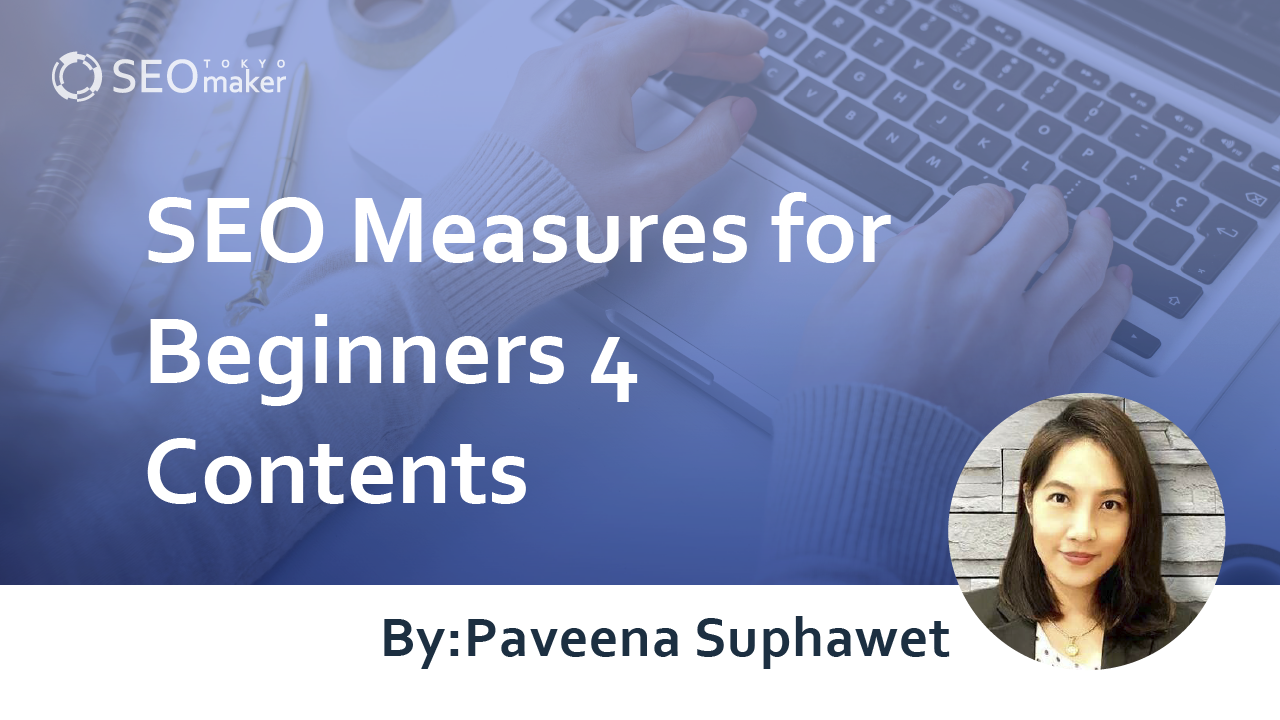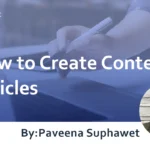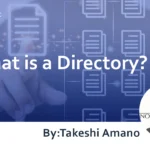SEO Measures for Beginners 4: Contents
contents
- 1 What is Contents?
- 2 The Relationship Between Website Content and Google’s Search Engine
- 3 The Relationship Between Advertising and Content
- 4 Deciding on the Website’s Theme (Keywords)
- 5 Writing High-Quality Text
- 6 Optimizing Links
- 7 Increasing Update Frequency
- 8 Frequently Asked Questions About Content
- 9 Summary

As you manage a website, you will find yourself creating new pages. In doing so, you’ll combine various elements like text and images to construct your contents.
The value of this content provides to site visitors significantly influences the overall rating of your website. Therefore, it’s crucial to first consider the needs of your site visitors when planning the contents you create.
Today, let us discuss SEO strategies for complete beginners, focusing on content. If you are an absolute beginner, it’s recommended to read a recent guide on what SEO is and the latest strategies before proceeding with this page.
What is Contents?
Originally, the term ‘content’ referred to substance or material. Now, it represents the information shared through different media, like TV and the internet.
Yet, the meaning of ‘content’ can differ across industries. Please be mindful that the meaning of ‘content’ can subtly vary depending on the context and speaker, to ensure there are no misunderstandings.
Types of Content
The significance of content varies depending on the industry and perspective. Specifically, in the web domain, content can include
- Blog posts
- News articles
- Review articles
- Forums
- Social Networking Services (SNS)
- White papers
- Press releases
Please be aware of the diversity of content types and their respective meanings within your field.
Elements Constituting Content
A webpage (content) on a website comprises various elements. Breaking down the content, it divides into elements such as
- Text
- Video footage (moving images)
- Images
- Comment postings
- Social media posts
The Importance of Content
In recent times, it has been said that content is crucial for SEO. Let’s delve into the reasons behind this.
The Relationship Between Website Content and Google’s Search Engine
Content is the information shared by a website. A website’s main functions are
- Answering visitors’ questions
- Providing a place for entertainment and engagement, offering valuable time
In any case, it’s essential to give people a reason to visit your site, often by providing highly original and convenient content. Thus, it’s crucial to consider what unique offerings your site can provide.
Meanwhile, Google’s mission through its search engine is to deliver a comfortable search experience to its users.
For instance, if the quality of search results on Google’s search engine deteriorates, leading to dissatisfied users, more people might choose not to use Google for information retrieval. This could potentially lead to Google’s decline. To prevent this, Google must value websites that contribute to a meaningful search experience.
Thus, from the perspective of increasing users, the interests of Google’s search engine and websites align. From the viewpoint of website operators, providing high-quality content offers two main benefits
- An increase in fans of the website (i.e. repeat visitors)
- A direct impact on SEO (i.e., attracting new users)
Adopting Content SEO
The method of providing high-quality content to encourage search traffic is called content SEO. In recent SEO practices, content is given high importance, making it a widely adopted concept. If you’re planning to operate a website seriously, consider implementing content SEO.
Related Article: What is Content SEO? Introduction to its Key Points, Benefits, and Success Stories
EEAT (Previously EAT)
EEAT stands for the criteria Google’s search system uses to evaluate search results for each website. EEAT is an acronym for
- Experience
- Expertise
- Authoritativeness
- Trustworthiness
Related Article: Understanding EEAT (Experience, Expertise, Authoritativeness, Trustworthiness): A Guide to the Evaluation Criteria
Adding “Experience” to EAT
Originally, there was a concept called E-A-T, where Google sought three elements in websites: Expertise, Authoritativeness, and Trustworthiness. However, on December 15, 2022, Google Search Central announced the addition of ‘Experience’ to E-A-T, making it E-E-A-T.
Concrete Examples Demonstrating the Importance of E-E-A-T
In real life, the same words spoken by different people can carry different levels of persuasiveness. For instance, consider the following cases:
-A regular person says, ‘This shop’s ramen is delicious, so it will become popular.’
-The owner of a popular ramen restaurant saying, “This restaurant’s ramen is delicious and will become popular.”
Normally, the first comment is taken as just a personal opinion from a regular person. In contrast, the second comment is seen as an objective answer based on knowledge and experience, such as:
-Years spent thinking about ramen all day (Experience)
-Being a leading figure who has studied and created popular ramen (Authoritativeness)
-Having a track record of running a popular ramen shop and continuously making ramen (Trustworthiness)
-Knowing the characteristics of popular ramen through store management (Expertise)
Thus, even though the comments are the same, the reasons behind the answers differ. If you were to ask why ‘this shop’s ramen is delicious and will become popular,’ the latter would likely provide a more satisfactory explanation.
This principle also applies to website content. For example, if the owner of a popular ramen shop writes a recipe article on ‘ramen recipes,’ Google recognizes it as valuable and unique information shared by someone embodying E-E-A-T: a popular ramen shop owner.
The Relationship Between Advertising and Content
Content refers to the information and substance a media disseminates, but generally, advertisements are not considered part of web content. Moreover, ads within a page are often seen as making the content less user-friendly. While it depends on the purpose of operating the website, a trend suggests that sites without ads tend to be more convenient for visitors.
Types of Advertising
Depending on the purpose of your website, you may find it necessary to include advertisements. When doing so, please choose the type of ads to display by considering both your site’s content and your visitors’ preferences. Generally, when incorporating ads, the following aspects should be considered:
- Methods of ad delivery
- Advertising pricing models
- The content and creativity of the ads
- Ad spaces and display formats
Out of these, the following two are especially important to consider for aligning with your content and visitors:
-Appeal and creativity of the ad
-Ad spaces and formats
Appeal and Creativity of the Ad
The content and creativity of an ad may not always align with your site’s media policy or brand identity. Moreover, if the ad’s product or service is irrelevant or offensive to your visitors, it could prompt them to leave your site.
Ad Spaces and Display Formats
The placement and format of ads can obstruct your visitors’ reading experience. Disruptive ad formats include:
- Pop-up ads (ads that appear at the forefront of the page)
- Tracking ads (ads that follow the screen scroll)
- Interstitial ads (ads displayed during page transitions)
Such ads, by forcefully inserting themselves into the viewer’s field, can make your site harder to use. Additionally, the large exposure area of these ads increases the likelihood of accidental clicks. If visitors find your site difficult to navigate, it not only increases the chance of them leaving but also reduces the opportunity to convert them into repeat visitors.
Creating High-Quality Content
To create high-quality content, there are several key points to consider, especially for article pages on websites. The process typically follows this flow:
- Creating a content map for your website
- Creating article pages (content)
Creating a Website Content Map
A content map is a visual representation of the entire structure of a website. Creating a content map first offers several advantages:
- Helps creators understand the number of pages to be created and the effort required
- Prevents duplicate content
- Allows for appropriate placement of internal links
- Helps visitors and Google grasp the overall structure of the website
Starting with an overall picture of the site and identifying the content to be created makes the subsequent process smoother and enhances visitor convenience across the website.
Related Article: What is a Content Map? An In-depth Explanation of Its Necessity and Key Points for Creation
Additionally, when creating a content map, please consider the following points
- Decide on the theme (keywords) for the website
- Determine the theme (keywords) for each page
Deciding on the Website’s Theme (Keywords)
First, clarify the theme of the website itself. Usually, a website is operated with a specific purpose in mind, so set your theme based on this purpose. For example, an article by Tokyo SEO Maker might use “SEO” as its theme, given our expertise in the field.
Deciding the Theme (Keywords) for Each Page
Base your article themes on the overall website theme. For example, if your theme is ‘SEO,’ select elements related to ‘SEO’ to develop your page themes. This approach will bring forth candidates for page themes such as the following.
- What is SEO?
- About Google’s Search Engine
- What is Web Marketing?
- The Latest News on SEO
- How to Create Web Content
Creating High-Quality Article Pages (Content)
Once you’ve identified the pages to be created, you can start writing the articles. To ensure high quality, keep the following points in mind:
- Dedicate one theme per page
- Incorporate original elements
- Write high-quality text
- Use images and videos
- Include the author’s information on the article
- Optimize links
- Increase the frequency of updates
Sticking to One Theme per Page
Normally, content is created around a single theme per page. Including irrelevant elements can confuse the page’s purpose, negatively affecting user experience and indexing. As a rule, maintain a single theme per page and structure the page with elements related to that theme.
Incorporate Original Elements
Incorporating original elements can create reasons for search users to visit your site. Originality can be introduced by the following ways.
- Introduce themes or plans not found on competitor sites
- Incorporate unique functionalities
- Provide unique perspectives or explanations on themes or news
Among these, unique functionalities might include, for example, offering more detailed filtering options for site searches. Essentially, this means implementing technology that helps site visitors find the information they want quickly from within your site or page content.
Writing High-Quality Text
Text is a crucial element for articles, including blog posts and reviews. Text that is easy to read and understand increases visitor satisfaction. When writing, ensure the text is of appropriate length for the theme, clearly written, and conveys the intended message.
- Adjusting the volume of text according to the theme
- Writing clear and comprehensible drafts
- Conveying the intended message through text
Adjusting the Volume of Text According to the Theme
Visitors come to websites seeking answers or solutions to their questions and problems. For instance, readers of this article are primarily interested in learning about:
- Essential knowledge for operating a website
- What constitutes content
- Key points in creating high-quality article pages
To address these queries, it’s crucial to craft your text with these needs in mind. Therefore, provide text of appropriate length that resolves the questions and challenges related to your theme.
Writing Clear and Comprehensible Drafts
Manuscripts that contain grammatical errors in Japanese or lack uniformity in language and expression tend to be difficult to read. Particularly, if it’s hard to understand what you’re trying to convey, it can lead to misunderstandings for both site visitors and Googlebot.
Write the Desired Content in Text
Besides text, page content can include images. Using image data can enhance visual representation and usability.
However, Google Search Central’s SEO best practices for image search advise against embedding important text within images. Especially, ensure that page titles, headings, and significant content are written in text.
Utilizing Images and Videos
Visuals like diagrams and videos can help clarify complex explanations, enhancing content understanding. When embedding images, use the HTML “alt” attribute to provide alternative text.
Related Article: What is the alt Attribute? Descriptions to Maximize SEO Benefits
Moreover, strategically placing images or videos can provide a break in the text, offering site visitors a “visually pleasing page” experience.
Including Information About the Article’s Author
As suggested by Google’s E-E-A-T (Experience, Expertise, Authority, Trustworthiness) principle, listing the authors or reviewers at the end of articles adds credibility. Include the authors’ or reviewers’ career achievements and credentials.
- The author(s) and reviewer(s)
- The career and achievements of the author(s) and reviewer(s)
Optimizing Links
Web links come in two types: internal links, which connect pages within a website, and external links, which connect to pages outside the website. Appropriately placed links enhance visitor convenience. Furthermore, placing a link is referred to as ‘outlink,’ and receiving a link is known as ‘backlink.
- Optimize internal links
- Gather backlink from external sources
Optimizing Internal Links
Connecting pages within your website through internal links enhances usability. Additionally, Google recognizes these connections as elements of high relevance. In SEO, covering themes comprehensively is crucial, but by optimizing internal links, you can appeal to Google as a site rich in information related to its theme.
Gather External backlinks
Increasing quality external backlinks can boost SEO effectiveness. For instance, imagine you have set up a brand site for your product. In such cases, you could ask media outlets you have relationships with for placement. This way, you can naturally acquire quality backlinks.
Related Article: What is Link Juice? Explaining its Relationship with SEO and PageRank
Increasing Update Frequency
Maintaining and updating a website are closely related activities. Websites need to provide value in the present, necessitating regular updates. Regarding updates, it’s important to be aware of the following two points:
- Quickly reflect the latest information
- Update the entire site moderately
Reflect the Latest Information Quickly
To achieve high ratings from Google, it’s essential to provide valuable information that is not only accurate but also timely. This is especially true for content that deals with trending topics, where the currency of the information is critical. Once the freshness of the information begins to fade, it’s necessary to update it with new data.
Moderately Update the Entire Site
Sites with low update frequencies are less likely to receive high ratings from Google. However, more updates are not always better; updates should be made at a frequency that suits the theme of the website.
Moreover, pages published several years ago often do not serve the current needs of visitors. Such outdated content should either be rewritten with the latest information or organized accordingly.
Frequently Asked Questions About Content
Here we have compiled some frequently asked questions about content.
Q: Is it better to have more pages and content?
A: No, it’s not necessarily better.
It’s important to gather content necessary for your website’s theme, so having more articles doesn’t necessarily mean better. Elements unrelated to your site theme can cause confusion for visitors, so be mindful.
Q: Is it better to publish pages quickly?
A: Yes, faster page publication is better.
However, don’t prioritize speed over quality, leading to publishing unfinished articles or those with many errors. Such articles can mislead visitors, so caution is needed.
Q: What kind of content should I create for my pages?
A: Please create content that aligns with your theme.
Start by organizing the goals and objectives of launching your website. Clarify your website’s theme and pick elements highly related to it for your page themes.
Proceed with content creation after setting the theme for each page.
Q: What constitutes high-quality content?
A: Generally, high-quality content refers to unique content that is useful to site visitors.
Taking news articles as an example of high-quality content, this would include
- Information that meets a need
- Accurate information
- Information with high timeliness
- Information created from original reports or viewpoints
Q: Is it better to have more text on a page?
A: Not necessarily.
The appropriate amount of text on a page varies depending on the site structure and page theme. While covering a theme comprehensively is crucial for SEO, it’s not necessary to include all elements on one page. The focus should not be on the word count but on including necessary information based on the purpose of the communication and the nature of the target readers.
Summary
In a web media, content refers to the information and material a media disseminates, such as blog posts and news articles. From an SEO perspective, striving for high-quality content creation is essential when operating a website. Start by setting your site’s theme based on its operational goals and objectives, and then consider from the reader’s perspective what constitutes valuable content.










![What is a Description? Explaining the Meaning, Writing Style, and Changing Word Count – [2023 Edition]](https://www.switchitmaker2.com/en/wp-content/uploads/2024/09/what-is-description.webp)










